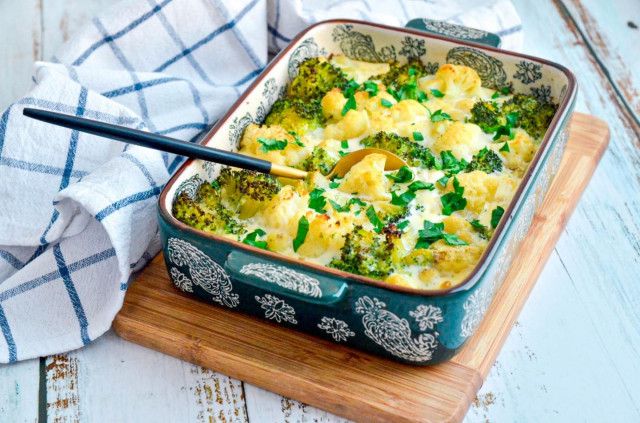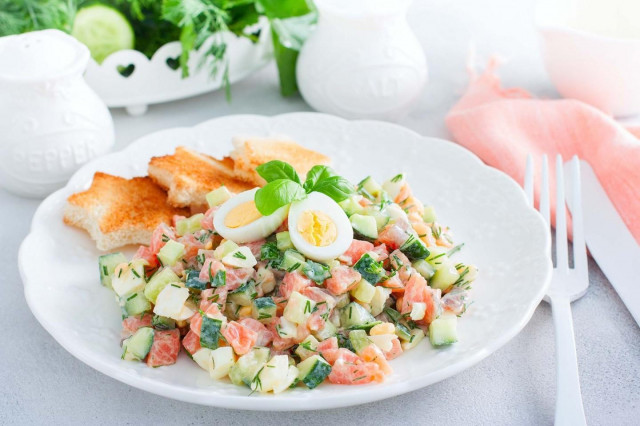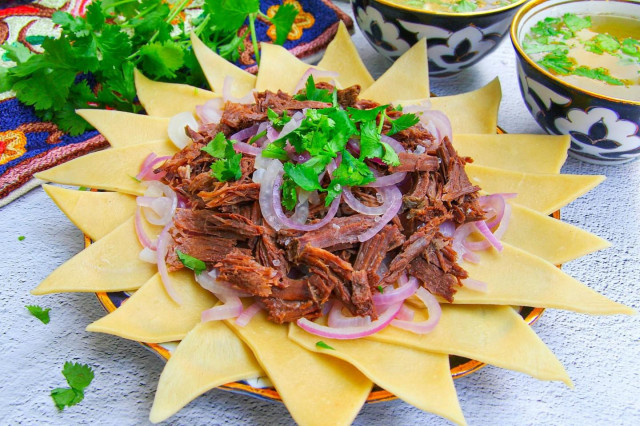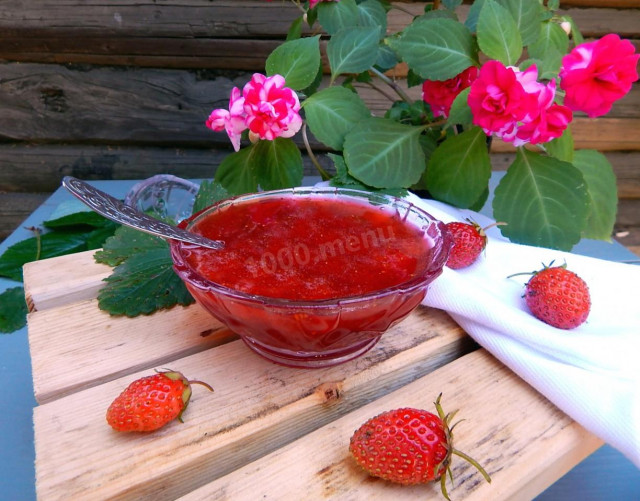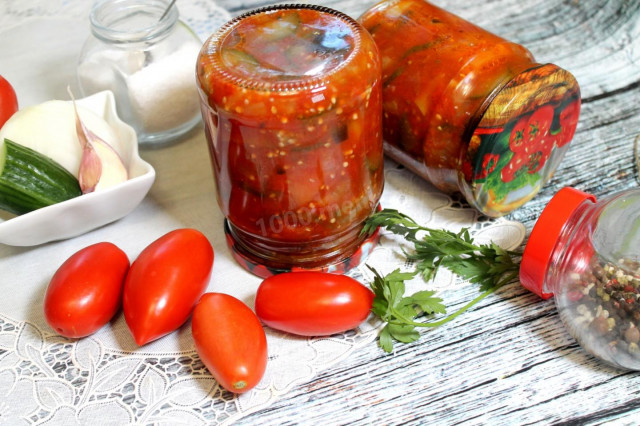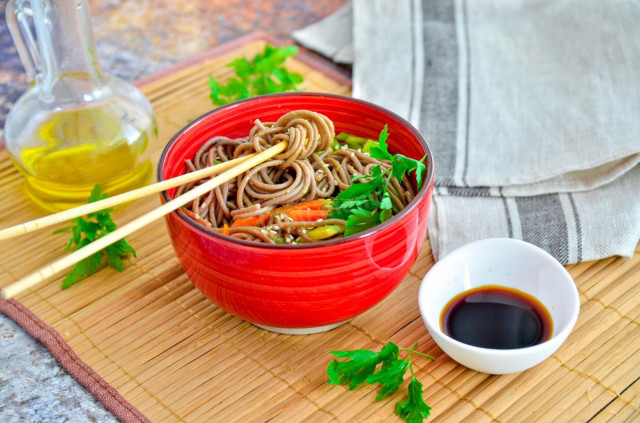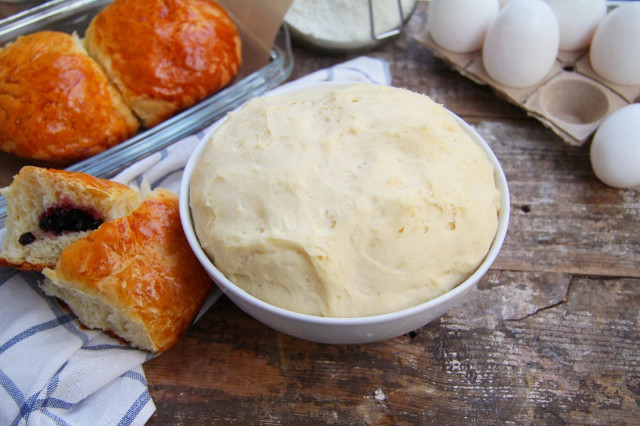Composition / ingredients
Step-by-step cooking
Step 1:
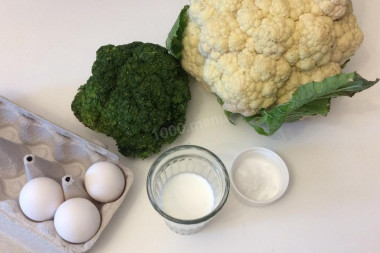
How to bake broccoli and cauliflower in the oven? Prepare the products. Cabbage is suitable both fresh and frozen. I advise you to weigh fresh after cutting, before it is too heavy.
Step 2:
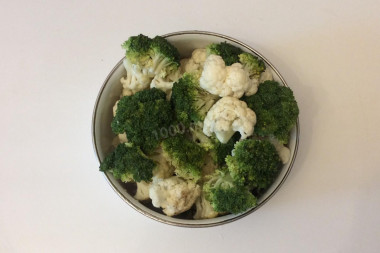
Cut the cabbage into inflorescences. This is done very simply — turn the forks over and cut off the small heads alternately. Now wash the chopped cabbage. Wash it under running water, thoroughly rinsing it from sand and dirt. If you are using frozen cabbage, then skip this step.
Step 3:
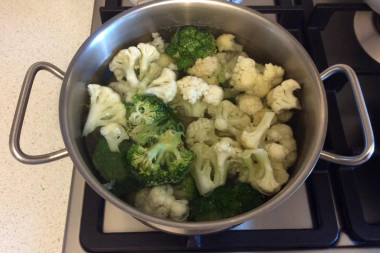
Put a pot of clean water on the fire, add a little salt and bring it to a boil. Throw the cabbage into the pot. Throw frozen directly from the freezer, without defrosting.
Step 4:
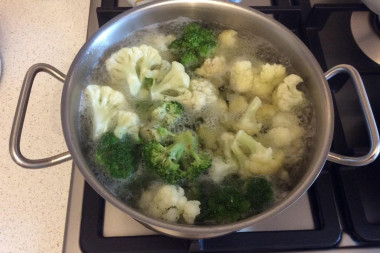
Cook the cabbage on low heat for about 5 minutes.
Step 5:
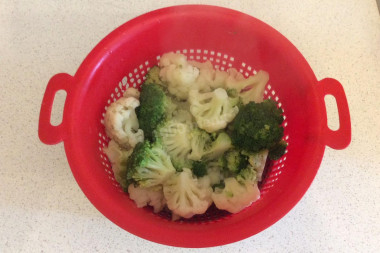
Then throw it into a colander, the water from the cabbage should drain well so that there is no excess liquid in the casserole.
Step 6:
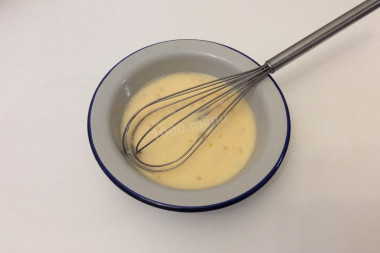
Combine eggs with milk, add salt to taste and lightly whisk with a whisk. It is not necessary to hit hard, you can even use a fork, it is not critical.
Step 7:
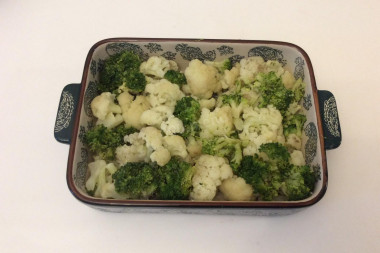
Put the cabbage in a baking dish. I lightly greased the bottom and sides with butter, although this was not in the recipe. To make the casserole look beautiful, try to lay the heads up with the curly side.
Step 8:
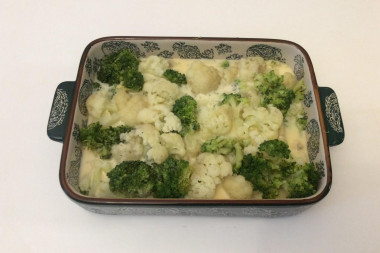
Pour the cabbage with egg-milk mixture. Put the casserole in the oven, preheated to 200 degrees, for 20 minutes. A few minutes before cooking, you can sprinkle the casserole with grated cheese to your taste. So it will be even tastier! Serve on the table, sprinkled with fresh herbs. Enjoy your meal!
The casserole really turned out to be very satisfying. It tastes like an omelet with lots of cabbage.
When cooking, start not so much from the gramming, as from the volume. I had to add milk, otherwise the whole cabbage would not be poured.
You can also add any spices and seasonings during cooking, as well as chopped herbs directly into the milk-egg mixture.
The finished casserole can be sprinkled with cheese, then sending it to the oven for another five minutes. Cheese can also be grated directly into milk, then consider the amount of salt.
Be sure to wash the eggs before use, as even the seemingly clean shell may contain harmful bacteria. It is best to use food detergents and a brush.
Keep in mind that everyone's ovens are different. The temperature and cooking time may differ from those specified in the recipe. To make any baked dish successful, use useful information about the features of ovens !
Any heat-resistant mold is suitable for this recipe. If you use a silicone mold, then you do not need to smear it with butter or margarine. But it is better to lightly lubricate metal, ceramic or glass dishes with vegetable oil so that the baking does not burn.
Caloric content of the products possible in the composition of the dish
- Whole cow's milk - 68 kcal/100g
- Milk 3.5% fat content - 64 kcal/100g
- Milk 3.2% fat content - 60 kcal/100g
- Milk 1.5% fat content - 47 kcal/100g
- Concentrated milk 7.5% fat content - 140 kcal/100g
- Milk 2.5% fat content - 54 kcal/100g
- Chicken egg - 157 kcal/100g
- Egg white - 45 kcal/100g
- Egg powder - 542 kcal/100g
- Egg yolk - 352 kcal/100g
- Ostrich egg - 118 kcal/100g
- Cauliflower - 28 kcal/100g
- Broccoli - 33 kcal/100g
- Salt - 0 kcal/100g
- Fresh frozen soup greens in a package - 41 kcal/100g
- Greenery - 41 kcal/100g

